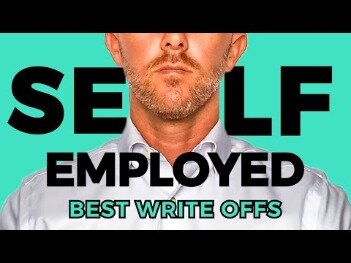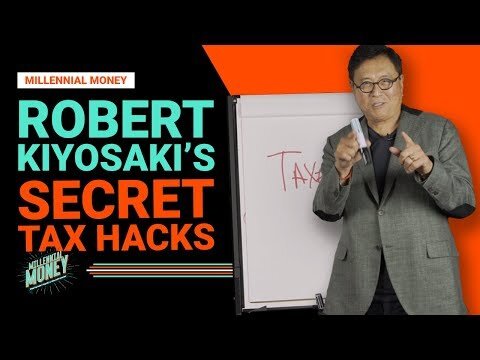
Variable costs are expenses that do not remain constant; they vary with time and are directly affected by the production process. Fixed CostFixed Cost refers to the cost or expense that is not affected by any decrease or increase in the number of units produced or sold over a short-term horizon. It is the type of cost which is not dependent on the business activity. For our table manufacturer, assume producing 1,000 tables per month could be done in one facility with one supervisor. However, doubling production would mean renting another assembly facility and hiring another supervisor, doubling fixed costs.

When done right, the process is simple; however, there are various aspects to consider along the way. In this article, we’ll simply explain everything you need to know about the matter with hands-on examples. If the company would continue to incur the cost, it is a fixedcost. If the company no longer incurs the cost, then it is most likely a variable cost. Examples of variable costs include the cost of raw materials, labor costs, and sales commissions.
fixed cost
This is because these expenditures are constant and rarely alter over time. Fixed CostVariable CostFixed costs are costs that do not change with the changing volume of production of a firm. The average variable cost is in a U shape because of economies of scale factors at the mid-level output. However, these effects diminish at higher output levels, as diseconomies of scale raise the cost dramatically at high output levels. Average variable costs can be helpful to determine how much the production of 1 unit costs. This can be important in determining the price and value of the product.

Upwise is available at no cost to all individuals and regardless of any MetLife relationship or product. Each individual is advised to consult with their own attorney, accountant, and financial professional regarding their specific circumstances. MCS does not provide legal, tax, or investment recommendations or advice. Variable expenses are those that change in cost and occurrence. These expenses are more difficult to plan for, as they can vary depending on several factors, such as unforeseen events and discretionary spending.
Fixed Cost Definition
How you classify some expenses, like utilities and taxes, can change with the situation. An accounting firm, for example, may have relatively steady utility costs—whether it’s processing 100 or 1,000 tax returns. A manufacturing company’s gas and electricity bills, by contrast, may rise when its factories produce more stuff and fall when they produce less.
Unlocking the door to homeownership: Tips for small business owners – MSR News Online
Unlocking the door to homeownership: Tips for small business owners.
Posted: Tue, 18 Apr 2023 19:15:00 GMT [source]
Say you’re approached with a business offer from a savvy individual. They explain that they need 100 million dollars in overhead costs, but “it’s not that big of a deal,” they say. “How is 100 million dollars overhead not a big deal?” you exclaim. The individual says, “don’t worry that 100 million dollars seem like a lot now, but when we are producing 1 billion products worldwide, it’s really only 10 cents per unit sold”.
Business Studies
Your average fixed cost can be used to see the level of fixed costs you’re required to pay for each unit you produce. If a company makes zero sales for a period of time, then total variable costs will also be zero. But if sales are through the roof, variable costs will rise drastically. What your company should aim for are low variable costs that enable larger margins so your business can be more profitable. Fixed costs can include recurring expenditures like your monthly rent, utility bills, and employee salaries. Here are a few examples of fixed costs to give you a better idea.
Fixed costs remain the same no matter how much the business produces. To save on variable expenses, there are a few behavioral changes you can start implementing in your daily life. There’s a minimum cost to keep the lights on and the water running in your manufacturing facility, but this often increases in tandem with production volume.
What are fixed costs?
A few of the popular examples are labor charges and material costs. Now, the production level solely derives from the total labor charge or raw material. Any company expense connected to producing an extra unit of output or providing service to an extra client is referred to as a marginal cost.
Form 485BPOS NATIONWIDE VARIABLE ACCO – StreetInsider.com
Form 485BPOS NATIONWIDE VARIABLE ACCO.
Posted: Fri, 21 Apr 2023 13:11:57 GMT [source]
Fixed cost is payable irrespective of whether there is any product or not. At the same time, the variable cost incurs when there is any production. The long run is sufficient time of all short-run inputs that are fixed to become variable. As it gains market share and increases its output, the fixed cost is divided among a larger number of customers. The total cost of the natural monopoly is lower than the sum of the total costs of two firms producing the same quantity . This graphs shows the relationship between fixed cost and variable cost.
Average total cost is a basic formula for firms looking to maximize profit, as they can produce where the average total cost is the lowest. Or determine if selling at a higher quantity with lower profit margins will yield greater returns. The cost which changes with the changes in the quantity of output produced is known as Variable Cost. They are directly affected by the fluctuations in the activity levels of the enterprise.
It will remain the same per unit even when the production goes up. Some examples of fixed costs are salaries, rent, and property taxes. The profitability does not change in the case of variable costs even when production goes up. Although fixed costs may be subject to change, it is often rare to notice.
Launch a store that comes with everything you need to start selling, including marketing tools. Kevin has edited encyclopedias, taught history, and has an MA in Islamic law/finance. He has since founded his own financial advice firm, Newton Analytical. Brian Stauffer has over a decade of supply chain experience at a Global 200 consumer goods company, designing and executing supply chains for billion dollar brands. His specializations include global sourcing, planning, S&OP, and strategy. He has an MBA from New York University and a degree in Supply Chain Management from Michigan State University.
Factors Likely to Influence Whirlpool’s (WHR) Q1 Earnings – Nasdaq
Factors Likely to Influence Whirlpool’s (WHR) Q1 Earnings.
Posted: Tue, 18 Apr 2023 13:59:00 GMT [source]
So, this is all for the difference between Fixed Cost and Variable Cost. Fixed Cost was not included at the time of inventory valuation, but Variable Cost is included. The Balance uses only high-quality sources, including peer-reviewed studies, to support the facts within our articles. Read our editorial process to learn more about how we fact-check and keep our content accurate, reliable, and trustworthy.
Examples of fixed costs for an event
To do that, you’ll need to know how to make the best decisions about where, when, and how you can lower your total costs. When you’re steering your business through an economic crisis, you can look to variable costs to guard against cash flow problems. You can set different bonus structures for employees depending on your business’s needs, which will affect your fixed and variable expenses. However, the actual quantity of required raw material varies.
Fixed costs are often seen as unavoidable—employee salaries, electricity, rent, and office expenses. Variable expenses, on the other hand, are often seen as discretionary. Maintenance costs are a good example; maintenance is essential but can be delayed if there’s a cash crunch. As a result, we deduct the total variable expenses from the net sales when computing the contribution. Operating leverage is equal to total fixed costs divided by operating income.
Examples include oil & gas, automobiles, real estate, metals & mining. Fixed costs are independent of the quality of goods or services produced. Fixed costs tend to be time related costs including salaries or monthly rental fees.
Regardless of the operations and productivity, these costs must be borne by companies all the time. A business’s total cost will always increase as output increases. The average total curve demonstrates how costs increase slower at mid-level outputs.
- Variable costs, however, do not remain the same and are usually directly linked to business activities.
- Now that you understand the differences between fixed and variable costs, it’s time to dig in and start reducing your bottom line.
- If the business does not produce any shoes for the month, it still has to pay $7,500 for the cost of renting the machine.
- Clients may be referred to Androscoggin Financial Services (Member FINRA/SIPC) for investment options, or to Androscoggin Insurance Agency for insurance products.
A percentage royalty paid on fte meaning sold is an example of a variable cost. Fixed costs are called indirect costs because they are not directly related to the volume of the production of a firm. Having knowledge of costs incurred by a company is a subject of major importance for the management. As costs are a major constituent of profitability, managers tend to keep costs as low as possible. However, to do so, one must know various types of costs and how and when to incur them.
It depends on the weather, fuel charges, infrastructure, and conditions. Moreover, the particular government is in charge of infrastructure. Master excel formulas, graphs, shortcuts with 3+hrs of Video. Sales CommissionSales commission is a monetary reward awarded by companies to the sales reps who have managed to achieve their sales target. It is an incentive geared towards producing more sales and rewarding the performers while simultaneously recognizing their efforts.
In economics, the total cost is the total economic cost of production. Total cost is the total opportunity cost of each factor of production as part of its fixed or variable costs. Some very common examples of fixed costs include property tax, lease and rent payments, certain salaries, depreciation, insurance, and interest payments. Raw materials, labour costs of temporary workers, and packaging are examples of variable costs, while rent, salaries, and property taxes are examples of fixed costs. Another way of analyzing production costs is by tracking the rise and fall of average costs. Average total costs are essential as companies looking to minimize costs want to produce at the lowest point of the average total cost curve.
If you want to lower your monthly rent, reach out to your landlord to negotiate a lower cost in exchange for a longer lease or a lease extension. If your current location is larger than you need or the cost is breaking the bank, look to downsize or move to a more affordable property. These are the expenses you can’t reduce regardless of how much business you’re doing. Fixed expenses are often time-related, such as your monthly office lease payment.
